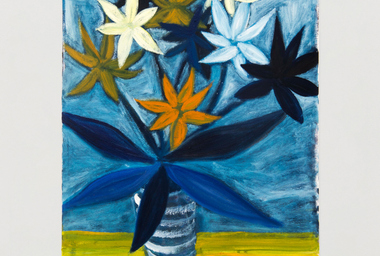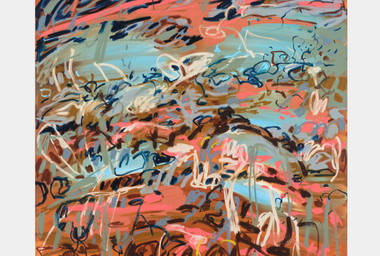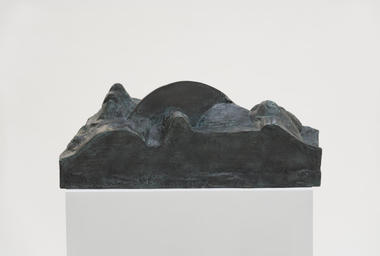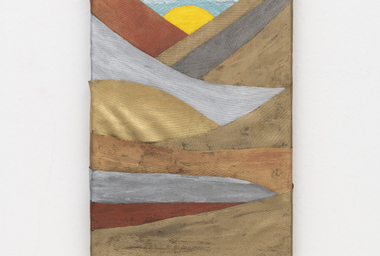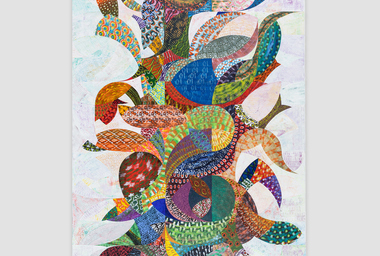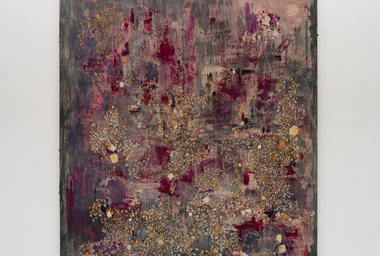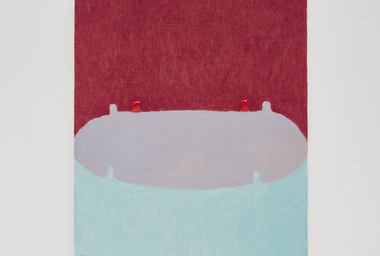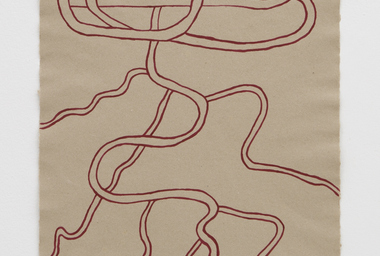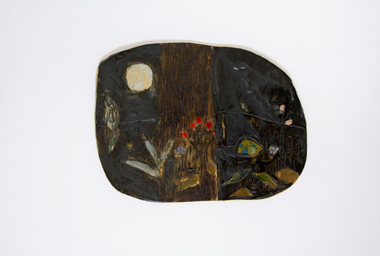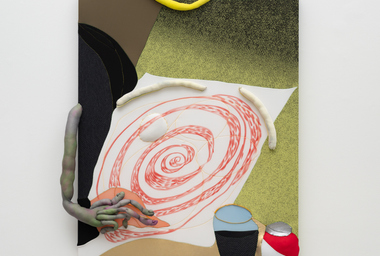
Nunca só essa mente, nunca só esse mundo
Nov 30, 2023 – Feb 9, 2024
Opening
Nov 30, 6 pm–9 pm
Carpintaria
Rua Jardim Botânico 971,
Rio de Janeiro
Directions
Download
Efrain Almeida | Rodrigo Andrade | Barrão | Carlos Bevilacqua | Anderson Borba | Tiago Carneiro da Cunha | Rodrigo Cass | Leda Catunda | Tatiana Chalhoub | Sheroanawe Hakihiiwe | Lucia Laguna | Cristiano Lenhardt | Amadeo Luciano Lorenzato | Robert Mapplethorpe | João Maria Gusmão & Pedro Paiva | Rodrigo Matheus | Paulo Monteiro | Gerben Mulder | Ernesto Neto | Aislan Pankararu | Mauro Restiffe | Marina Rheingantz | Gokula Stoffel | Tadáskía | Antonio Társis | Janaina Tschäpe | Erika Verzutti | Frank Walter | Allan Weber | Yuli Yamagata | Luiz Zerbini
Like the horizon that marks the meeting point between the earth and the sky without, however, belonging completely to either, the works on view here lend a form to the search for proximity and reciprocity with the physical world. The exhibition approaches transitive states and interstitial formulations. Situated along the intervals between our immediate perception and the capacity for imagining other scenes, the path traced here outlines nature as a gathering of correlation processes between the given and the constructed, a fabric of shifting relations. In other words, we can follow the mind as it makes contact with the physical world, but never the mind or the world only.
Between the vast landscape photographed by Mauro Restiffe, Tatiana Chalhoub’s enameled ceramics and João Maria Gusmão & Pedro Paiva’s topographic relief, a compression and expansion of disparate horizons takes place. These can harbor the gaze, dissolve space into a vaporous ambiance or bring the mineral density of a mountain range into close reach. Rodrigo Cass’ concrete diptych of concrete painting on linen can be seen as the end point of this path, decomposing images into minimal lines that evoke the skeletons of mountains, as in Rodrigo Matheus’s aerial installation.
Cristiano Lenhardt and Erika Verzutti’s sculptures cross the physicality of their materials with an insistence upon cyclical configurations, in a ring of eggshells and a wall relief whose vivid yellow and circular central motif recall the sun’s radiation and the yolk, images of gestation and recurrence. Anderson Borba’s sculpture and Antonio Tarsis’ matchbox assemblage seem to have suffered the wear of time, like driftwood or a weathered building. On the other hand, Yuli Yamagata’s textile composition and Luiz Zerbini’s immense tangled surface, as well as Barrão’s watercolors, produce panoramas decomposed into objects and contours, reproducing natural arrangements artificially.
The landscape is, in a certain regard, the way in which parts of the world are connected before the gaze, like the trail that leads from Rodrigo Andrade’s roadlike abstraction to the late Afro-Caribbean artist Frank Walter’s flurry of gold-glowing birds. A sensory archive of the forms and contours of nature and our dwelling in it, an aggregate of aspects that participate in a continuous hole. Ernesto Neto introduces in space the interplay of forces and counterforces present in all living systems, in a formal and conceptual homage to the natural forces that model whole ecosystems. Tadáskía’s diptych, in this sense, signals the fluency that drawing shares with the transformative forces that form a landscape, converting turbulent movement into a sort of script.
Marina Rheingantz, Lucia Laguna and Gokula Stoffel present abstract painting whose profusion of textures and amorphous pictorial elements create dissolving atmospheres, quicksand surfaces charged with psychological density. The collaborative sculpture made by Anderson Borba and Erika Verzutti recalls a cross or a sign pitched in the earth to bring out a place’s symbolic reverberations. Efrain Almeida’s branches with flowers, sculpted in Umburana wood, provoke a similar subjective opening, in which an object carries with it the memory of an imaginary topos. The gathering of six drawings from Sheroanawe Hakihiiwe, in turn, compose a repertoire of vegetable species and organic tangles, providing a view of the Amazon in abstract pictorialisms with links to the indigenous cosmology of his people.
Taking off from the partial framing of a flower in black and white, Robert Mapplethorpe’s photograph echoes Allan Weber’s tarp composition: both works produce an ambiguous relationship to scale, between micro and macroscopic, and allow the spectator to intuit an environment beyond the frame, just as in Gerben Mulder’s still life, Tiago Carneiro da Cunha’s sunny lake. Aislan Pankararu, with his vibrant palette and colored dots reproduces abstracted vegetable motifs in a pattern that evokes a section of forest, while Janaina Tschäpe’s sprawling canvass, in gestural meanders of oil paint and oilstick, ushers an immersive scene from abstract elements, with a synaesthetic quality that leads us from cold to warm.
Marking a new direction in his work, Carlos Bevilacqua’s painting constructs a fantastic scenario, suspended between constructive clarity and a wandering of the gaze. In his paintings, Paulo Monteiro deploys the rhythmic repetition of graphic and chromatic elements, leading to the gradual appearance of an underlying order. Historical painter Amadeo Luciano Lorenzato synthesizes bucolic landscapes characterized by contemplative immersion in physical data: a suggestive, silent twilight.
Special thanks to Galeria Galatea, Fernando Ferreira de Araujo, Mendes Wood DM and Nara Roesler.



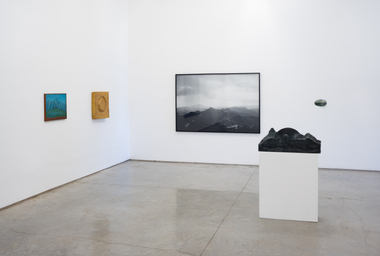

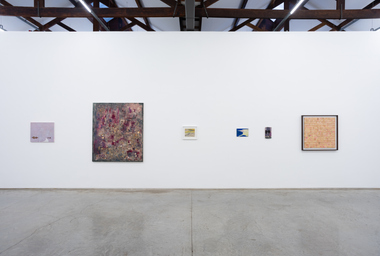
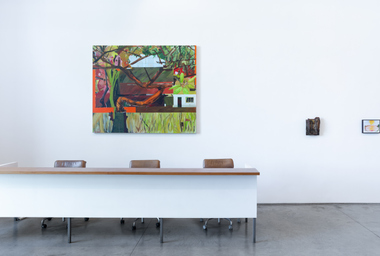
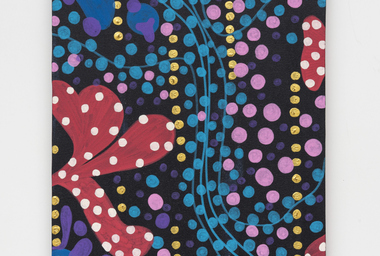
![ALLAN WEBER Sem título, da série Dia de Baile [Untitled, from the series Dance Day], 2023 Lona [Tarp]](https://fdag.com.br/app/uploads/2023/11/allan-weber-sem-titulo-da-serie-dia-de-baile-untitled-from-the-series-dance-day-2023-lona-tarp-380x256.jpg)
![AMADEO LUCIANO LORENZATO Sem Título _ Untitled, s.d. [n.d.]](https://fdag.com.br/app/uploads/2023/11/amadeo-luciano-lorenzato-sem-titulo-untitled-sd-nd-380x256.jpg)
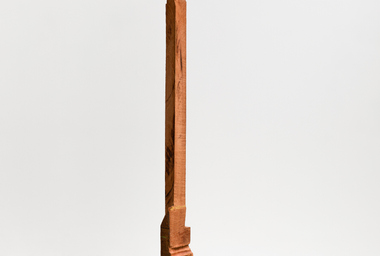
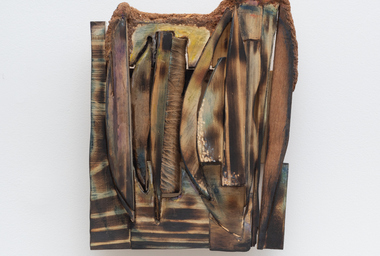
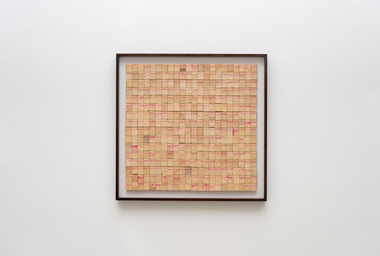

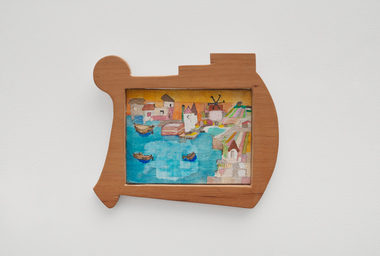



![FRANK WALTER Untitled [Water Birds Gathering], s.d. [n.d.]](https://fdag.com.br/app/uploads/2023/11/frank-walter-untitled-water-birds-gathering-sd-nd-380x256.jpg)
